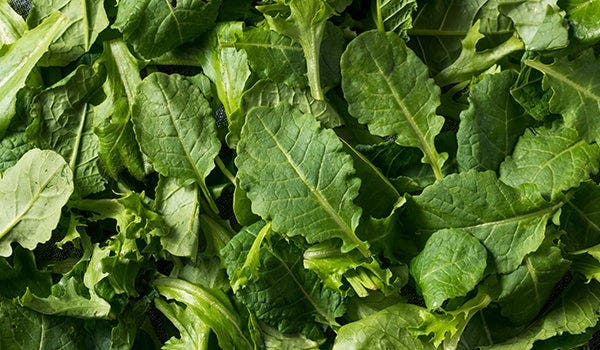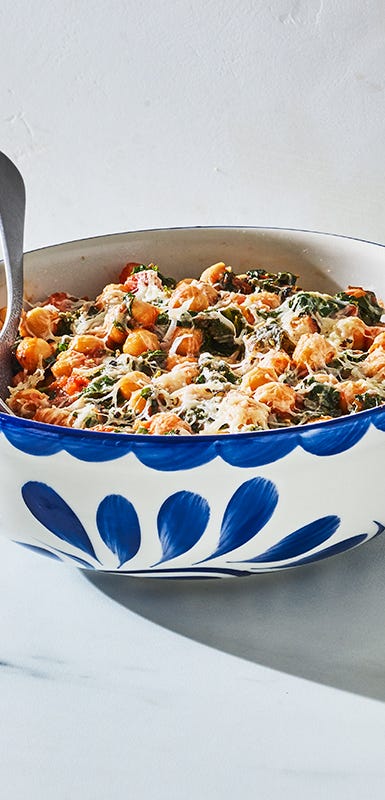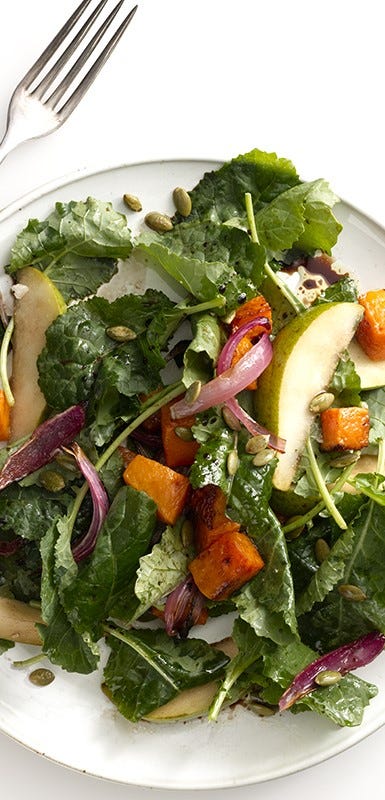21 Delicious Recipes for 4 Kinds of Kale


Since the kale craze struck a few years back, grocery stores and farmers markets have kept their displays well stocked with varieties of the leafy green. Even if you already consider yourself a kale fan, there's always more to learn (and love!) about this veggie family.
From curly kale to dinosaur kale, each type has its own special qualities. And experimenting with foods and flavors is half the fun of eating more healthfully, says registered dietitian Jaclyn London, MS, CDN, head of nutrition and wellness at WeightWatchers®. “Trying a variety of veggies—including different types of kale—in raw and cooked form can help you discover new recipes you love and help add more produce to your plate,” she says. No matter which type of kale you choose, you’ll get fiber, phytonutrients, and minerals that support good health. Get started with this guide to four popular kale varieties, and dig into some delicious recipe inspo for each.
Curly kale

Curly kale is the most commonly used type of kale. In fact, if you see plain ol’ kale listed on a menu or in a recipe, this is the variety you can generally expect. The signature ruffled leaves are thicker than other leafys like spinach and have a bitter, peppery flavor. Cooking mellows the bitterness, but curly kale is also delicious raw. Just tenderize the leaves before enjoying: Separate them from the stem, then gently massage with a drizzle of EVOO or your favorite plant-based oil for a few minutes. (An acid-salt combo using lemon juice or vinegar can work, as well, depending on the rest of your recipe.) Both hardy and hearty, curly kale is ideal for baking into chip form, simmering in stews, and pairing with meaty flavors.
Lacinato kale

This leafy wonder goes by multiple names: Tuscan kale, black kale, and—perhaps most memorably—dinosaur kale, thanks to the reptilian-looking texture of its leaves. Compared with curly kale, lacinato leaves are flatter, narrower, and a bit more tender. Flavorwise, you can expect a sweeter, milder taste. Enjoy it raw in salads using one of the methods described above, or get your dino deliciousness in delicate dishes starring fish or pasta.
Baby kale

Don’t be fooled by this tenderest of kale types—it doesn’t sacrifice flavor or nutrients. Most commonly sold in plastic clamshell packages alongside other prewashed salad greens, baby kale leaves are similar in texture and size to those of baby spinach but pack a more peppery punch. No need to remove the stems or massage before tossing in a salad or stacking on a sandwich—once the leaves are clean, simply enjoy! Baby kale also makes a quick addition to cooked dishes like mac ’n’ cheese, making it a great choice when you’re short on time.
Red kale

This type, also called Russian red kale, is a little less common than the other three. If you find yourself in a grocery store that stocks it, you won’t be able to miss it. Its large, ruffled leaves look similar to those of curly kale and grow in a range of shades, from red to purply green. (Somewhat confusingly, it’s all called red kale.) As for the taste, it has the same peppery flavor as many other kale types, with some sweeter notes. Try swapping it for curly kale in recipes, or use it in place of arugula in salads.
--
Nicole Saporita is a senior content manager for consumer wellness at WW. A writer, editor, and content strategist based in New York, she specializes in health & wellness, lifestyle, consumer products, and more. Her work has appeared in Good Housekeeping, Prevention, and REDBOOK magazines.





















